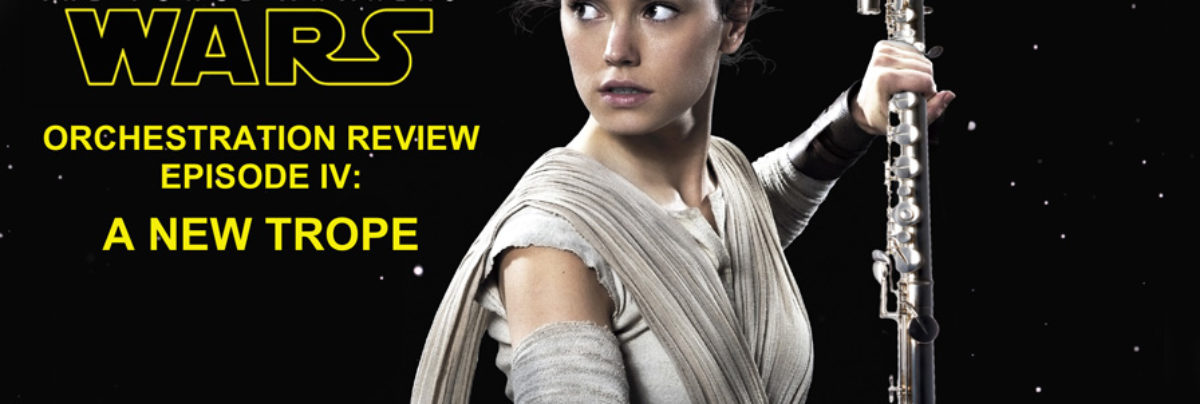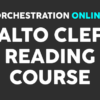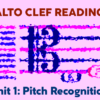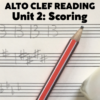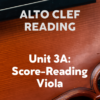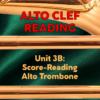Spoiler warning: discussions about character roles nearly everyone already knows from watching the previews, but no plot reveals.
“Will someone get this big walking carpet of my way?” The year was 1978, and this was my 16-year-old girlfriend’s favourite line from the recently-released Star Wars (now titled “A New Hope”). Like so many young women at that time, she’d become an overnight sci-fi fan after seeing the film and identifying with the unexpectedly wise-cracking, brash, and independent heroine Princess Leia. Indeed the ironic twist of the script was masterful for an epic tale, and quite original: the princess-in-distress is immediately unimpressed by the attempts to rescue her, and shows how futile and patched-together the entire heroic quest has been up to now. A farm boy, a smuggler, a sasquatch, and a long-retired cop taking on a planet-killing space station the size of New Hampshire? Don’t make me laugh. Even as the smuggler’s craft flies safely out of reach, she makes the shattering observation “They let us go. It was the only reason for the ease of our escape.”
As film composers, we help to shape the audience’s understanding of a character, sometimes suggesting deeper meanings than the script or even the actors can express. In the case of John Williams, this shaping can be profound and virtuosic. How did he elevate the irony of the plot? With the perfect deadpan: a lushly romantic theme with searching, unsettled modulations that cast a shadow of uncertain yearning. Of course this made the joke all the sharper in the end – and when the plot got past the joke, the theme developed along with its character.
The ultimate development of this theme was realised in the latest instalment, “The Force Awakens:” the reunion of old lovers, tinged with bittersweet nostalgia in the track “Han and Leia.” Instead of voyeuristic cellos, Leia’s theme is played by that old Mancini standby of tripled bass flutes at 0:10. Consider the advantage here over alto flutes or even C flutes (who could possibly have played this section with a rare A foot extension). Starting on a B-flat 3, the melody leaps up a major 6th into the bass flutes’ middle register, giving them a dewy quality of regret rather than a sense of breathy expectancy as would result from higher-pitched instruments. These triple bass flutes return at 3:25, following the action of the cue – but what’s more interesting is what comes before it and after it. There’s a touch of the next track, “March of the Resistance,” showing that Leia isn’t just an old flame, but a leader of great responsibility; and there’s also a touch of growling foreboding in the introduction of another theme referring to events I won’t spoil for you.
Leia was a character whose sense of personal power and self-control were often at odds with the flow of the plot – either challenging its assumptions, or being undermined by it. It’s to The Force Awakens scriptwriters’ credit that instead of repeating this formula, they created an entirely new set of variables with the new character of Rey, guaranteed to inspire the current generation of young film viewers. Rey is not a romantic interest, let alone a sex symbol; nor is she a damsel in distress sitting around waiting to be rescued. Here we don’t have a foil for the plot, but a fully involved main character from the beginning. She herself is a yokel from out of nowhere with no experience of how the galaxy works, and has to improvise as she goes along. And yet she’s no less mysterious and romantic a character as any in the entire Star Wars saga.
True to form, Williams strengthens this new character with her own themes, developing them throughout in such tracks as “Rey Meets BB-8,” “That Girl with the Staff,” and “The Jedi Steps and Finale.” My recommendation is to study “The Scavenger” rather than the actual “Rey’s Theme” for the best example of how to build a character through careful scene-setting and tone-painting.
The track starts with a low D pedal tone by double basses, followed by a long expressive concert G# on solo English horn forming an augmented 4th – the perfect dissonance with which to set the scene of exotic mystery. It’s typical of Williams, to use the simplest tools in the most effective way. I also like the fact that G# is one of those notes in which the sound of English horn and bassoon most resemble each other. The overtones are closer than on other pitches where the fatness of the English horn is easily distinguished from the bassoon’s paler tone.
English horn isn’t the identifying instrument for the new character Rey, however. The opening solo gives way to a rising passage that has a delicious blend of flutes and horns, leading to a C# minor pad over which a flute solo gives the first hint of individual character. The first bit of theme follows immediately, with two Williams signatures: a modulation between two minor keys using the mediant of the first as the common tone to the dominant of the second. In this case, E bridges from C# minor to A minor. The other signature is the use of celesta as an unaccompanied solo instrument. Once again, less is more, and Williams delivers a simple yet powerfully memorable motive. I like the stark quality to it. Unlike Hedwig’s Theme which was saturated in reverb, this celesta solo is almost nakedly processed.
This leads directly to the introduction what audiences will probably identify as “Rey’s Theme” when it appears throughout the rest of the film and in future films: a simple rhythmic motive, evoking a sense of innocence, isolation, and energy. Though it’s tossed around from instrument to instrument (starting with the most unlikely of entrances on a piano), it settles on the real vehicle for building Rey’s character, the flute. What’s great about this is how Williams shifts from there to a development of the motive as a true Star Wars epic theme. We see that this character’s lonely existence is set against the sweep of both a vast landscape and beckoning greatness. Note how the horns expand the motive into a grand meditation, giving over to the strings’ exponential elaboration, all the while winds make side comments with snippets of the motive.
The celesta theme returns, and the cycle begins again, but note the differences. Celesta is enhanced by flute, piano with strings, and the whole ritornello comes off as a bookend rather than a new passage. Williams is really setting up the master stroke here of the Star Wars series’ rejuvenation through Rey’s character. An unaccompanied horn slowly rises, and is then joined by strings in a moment reminiscent of the 1977 Star Wars’ introduction of Luke Skywalker. He definitely wants us to feel the the parallel. But he lets the flute take over in the most poignant part of the cue, showing that while Rey may be taking the place of Luke, she’s completely her own flavour and colour, and will bring a freshness and individuality to her role. And so she does, through this music, not to mention the script, direction, and fine contribution of actress Daisy Ridley.
I’ll add a final note here. John Williams admits that he “fell in love” with the character of Rey. That is one of his great strengths: to feel something sincere for the roles which he must musically exalt. His affection for her character is perhaps the greatest strength in this entire soundtrack in my opinion, going beyond craft and intellect into the realms of instinct and inspiration. Without that indulgent loving care, this film would be half of what it is. Rey is the heart of the film, and Williams frames everything around her with all he’s got.
Tomorrow, we’ll get back to the musical swashbuckling in Episode V: The Trumpets Strike Back!

